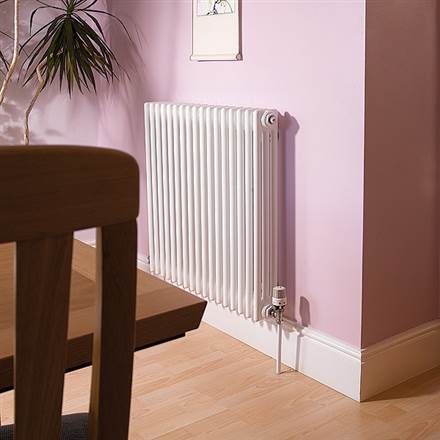
There’s nothing better than coming home to a lovely, snug house in the cold winter months. If you’re considering refurbishing your home or just replacing your out dated heating system, then you need to check out vertical radiators. Suitable for all rooms in the home, these are available in numerous colours and sizes.
This option is becoming more and more popular for homeowners – not only because it neatly fits into small spaces – but since it has a stylish look to it as well. Vertical radiators are available in the vast array of styles and finishes – choose from a sleek modern design to a classic traditional radiator.
The benefits of choosing vertical radiators include:
– They don’t take up much space so they can be placed in areas where floor space is limited.
– It’s easy to tuck them behind furniture or plant stands, so they’re perfect for bedroom, living room or dining room decorating schemes – just about anywhere you want warmth without bulk.
– Because they come in a range of finishes and styles, you can find a vertical radiator to match your décor. This is ideal when you’re renovating your home, especially on a budget.
– They heat up quickly so there’s no wasted time when it comes to warming the room.
– Vertical radiators are much smaller than traditional floor-standing models, which makes them ideal for small spaces such as hallways or bathrooms where space is limited. The compact nature also helps save on energy costs since fewer BTUs are required to produce the same amount of heat that a larger unit would produce. Modern radiators are great for energy efficiency.
Vertical radiators have been used for many years in Europe and gaining popularity too in the United States. Back in days gone by—in Victorian times—vertical radiators were actually cast iron. They were mounted to the wall with a pipe on either side, which often leaked steam into the room, so they weren’t exactly considered stylish home décor pieces.
As manufacturers have learned more about how homeowners live in modern homes, vertical radiators have evolved into sleek contemporary pieces that are easy to install and don’t take up much floor space. Moving homes no longer includes taking your radiator with you—leave it behind! Vertical radiators are so new that most rental properties don’t have them yet. But some luxury apartment buildings do!
If you’re considering purchasing one for your home but aren’t sure where to place it, here are some guidelines:
– Smaller rooms smaller radiators—usually 10- to 20-inch widths are fine.
– Medium sized rooms should have a vent surrounded by two 18- to 24-inch radiators.
– Larger rooms require multiple vents—three or more—surrounded by 28-, 30- and 36-inch wide radiators.
As far as installation goes, vertical radiator are mounted in much the same way that baseboard units are installed, but they do take up more wall space so you’ll need at least 1 ½ inches of wall space behind the unit for proper placement. And because they’re made with stronger steel coils, vertical radiators can hold their own weight without any additional support. Of course, you’ll still want these radiators mounted to studs in order to ensure that you get the best heat performance.
Vertical radiators are available in different metal types, depending on their intended use. For example, you’ll find copper and stainless steel vertical radiators—both of which are typically used in commercial or industrial settings because they hold up to high demands for long periods of time. However, if you’re looking for a more affordable option for your home or try out first before plunking down extra cash, consider purchasing an aluminum model since it’s less expensive than its counterparts but still provides reliable heating during those cooler months.
The most common type of vertical radiator found in homes today is made from chrome-plated steel tubing and has a white porcelain insulating coating.
